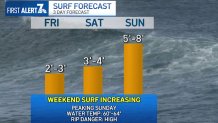Los Angeles Weather: What to Expect, Seasonal Trends, and Tips for Visitors
Are you planning a trip or daily activities in Los Angeles? Understanding the ever-changing Los Angeles weather is key. This guide will walk you through current trends, what makes the region’s climate unique, and offer helpful advice so you can make informed plans any time of year.

An Overview of Los Angeles Weather
Los Angeles enjoys a Mediterranean climate, which means mild, wet winters and hot, dry summers. Sunshine is abundant, and rain is rare outside the winter months. On most days, temperatures stay comfortable, making outdoor activities a year-round option for residents and visitors alike.
Typical Seasonal Patterns
- Spring: Mild and pleasant, with average highs ranging from 68°F to 75°F. Occasional light rain showers may occur early in the season.
- Summer: Warm to hot, especially in July and August. Highs can reach the mid-80s and sometimes the 90s, but the ocean breeze often keeps coastal areas cooler.
- Autumn: Marked by gradually cooling temperatures. September can still feel summery, but by November, it’s sweater weather in the evenings.
- Winter: The coolest and wettest period. Even then, daytime highs often reach the mid-60s. Occasional storms bring most of the area’s annual rainfall in just a few months.
How Los Angeles Weather Affects Coastal Activities
The beaches of Southern California are iconic, but coastal weather changes can impact safety and experience. For example, strong swells in nearby San Diego have brought waves up to 10 feet this spring, making beach safety a priority. For more details, see this informative report on large surf and spring swells in San Diego. Conditions like these, while less common in LA, can affect the entire Southern California coastline.
North of Los Angeles, sneaker waves can also pose a serious threat for beachgoers. The National Weather Service has issued warnings for the North Coast, urging visitors to stay vigilant. It’s wise to read about risks like these before planning coastal outings—refer to experts’ guidance in this article covering sneaker wave warnings along California’s North Coast.
What Makes Los Angeles Weather Unique?
Several factors set Los Angeles apart:
- Microclimates: Temperatures can differ by as much as 20 degrees between coastal neighborhoods and inland valleys on the same day.
- Low Humidity: The dry atmosphere keeps even high temperatures feeling comfortable, but can increase fire risk during summer and autumn.
- Wildfire Season: Dry, hot winds known as Santa Anas can spark wildfires, especially from late summer into fall. Stay aware of advisories if you’re traveling during these periods.
- Air Quality: On hot, stagnant days, air quality may worsen. Check current indexes if you have respiratory issues.
Travel Tips for Dealing with Los Angeles Weather
- Layer Clothing: Morning fog can be cool, but afternoons are warm and sunny. Dressing in layers is the best way to stay comfortable.
- Sun Protection: With over 280 sunny days per year, sunscreen and sunglasses are essentials.
- Watch Weather Updates: While storms are rare, they can cause disruptions. If rain is forecast, prepare for traffic delays and occasional flash flooding in certain areas.
Conclusion: Stay Prepared and Make the Most of Los Angeles Weather
Los Angeles weather makes the city a wonderful place to visit any time of year. Whether you’re exploring beaches, hiking, or sightseeing downtown, understanding current patterns means you’ll enjoy every moment. For up-to-date conditions and additional insights, consult trustworthy sources and stay informed. Enjoy all that sunny LA has to offer!